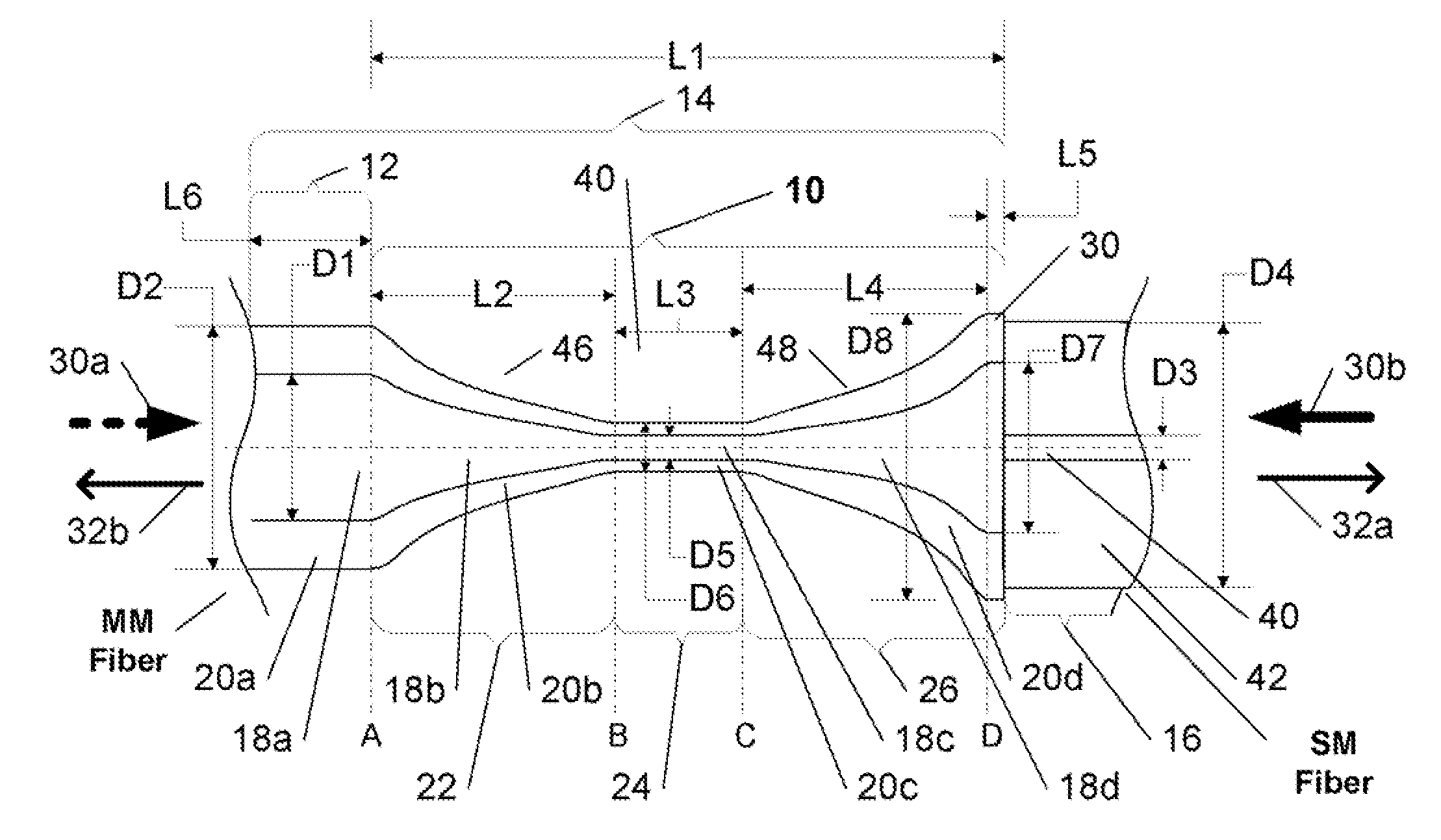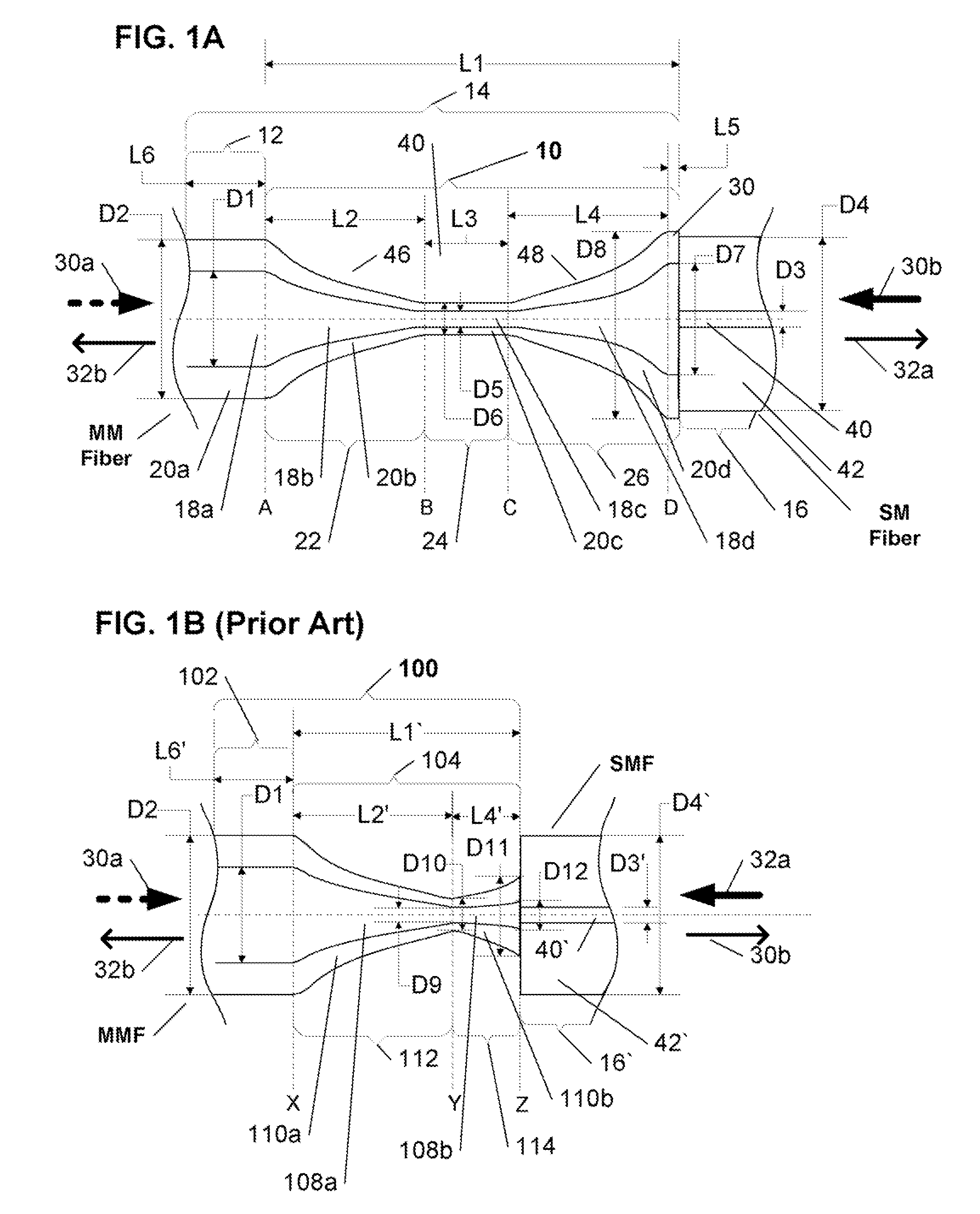Optical fiber mode coupling device, having an optimized fiber interface and method of fabrication thereof
a fiber interface and optical fiber technology, applied in the field of optical fiber mode coupling devices, can solve the problems of occupying valuable space in digital communication system components, edcs are relatively bulky, and the approach suffered from a number, so as to facilitate the connection to a conventional optical fiber, maximize the coupling, and achieve the effect of high degree of ruggedness and reliability
- Summary
- Abstract
- Description
- Claims
- Application Information
AI Technical Summary
Benefits of technology
Problems solved by technology
Method used
Image
Examples
Embodiment Construction
[0026]The optical fiber mode coupling device of the present invention not only addresses the flaws and shortcomings of previously known mode filters, but is also capable of selectively being utilized for fiber mode conditioning, while advantageously being configured for connection to a conventional optical fiber with a high degree of ruggedness. The inventive mode coupling device substantially only allows coupling of at least one supported fiber mode, and is preferably configured to maximize the coupling with only at least one desired fiber mode.
[0027]Advantageously, the inventive mode coupling device is capable of performing the functions of a mode filter for a signal entering its first end from a multimode optical fiber, or serving as a mode conditioner for a signal entering its opposite second end from a single mode optical fiber. Accordingly, in one practical application thereof, the inventive mode coupling device functions as a mode filter by maximizing the coupling between at ...
PUM
| Property | Measurement | Unit |
|---|---|---|
| refractive indices | aaaaa | aaaaa |
| refractive index | aaaaa | aaaaa |
| core diameter | aaaaa | aaaaa |
Abstract
Description
Claims
Application Information
 Login to View More
Login to View More - R&D
- Intellectual Property
- Life Sciences
- Materials
- Tech Scout
- Unparalleled Data Quality
- Higher Quality Content
- 60% Fewer Hallucinations
Browse by: Latest US Patents, China's latest patents, Technical Efficacy Thesaurus, Application Domain, Technology Topic, Popular Technical Reports.
© 2025 PatSnap. All rights reserved.Legal|Privacy policy|Modern Slavery Act Transparency Statement|Sitemap|About US| Contact US: help@patsnap.com



